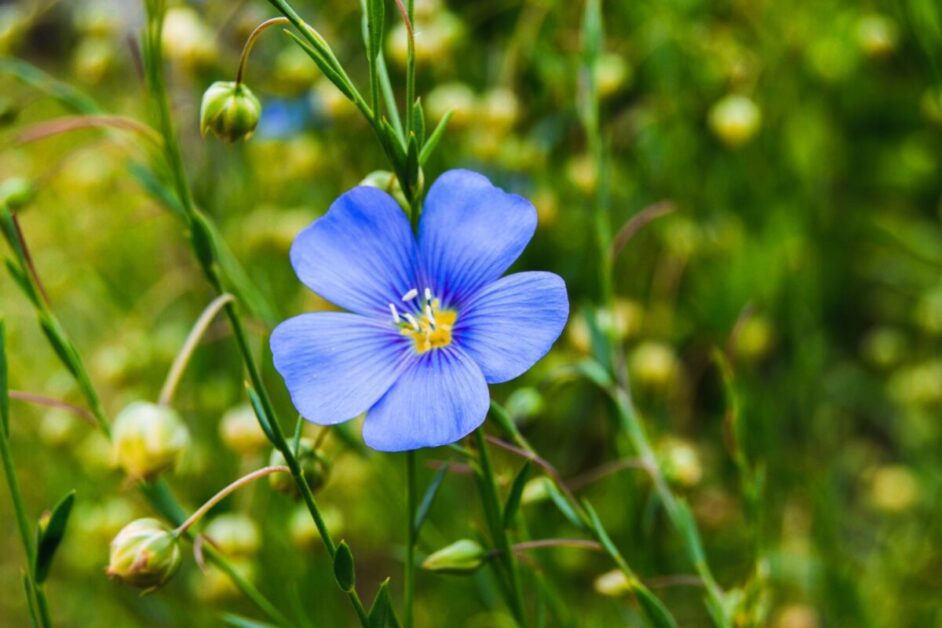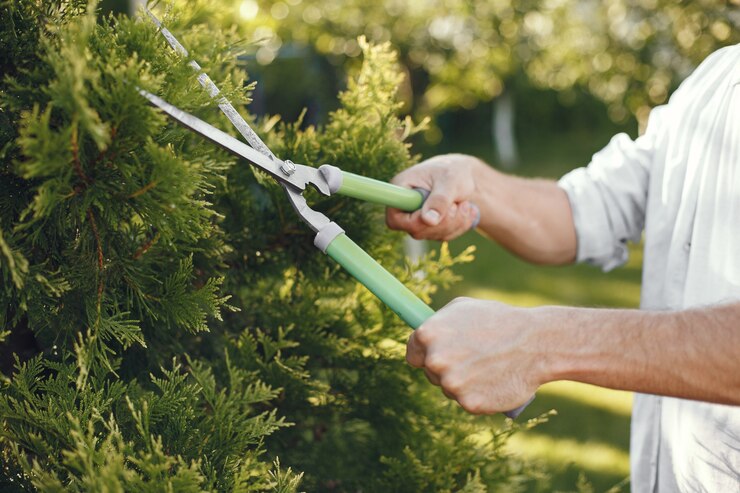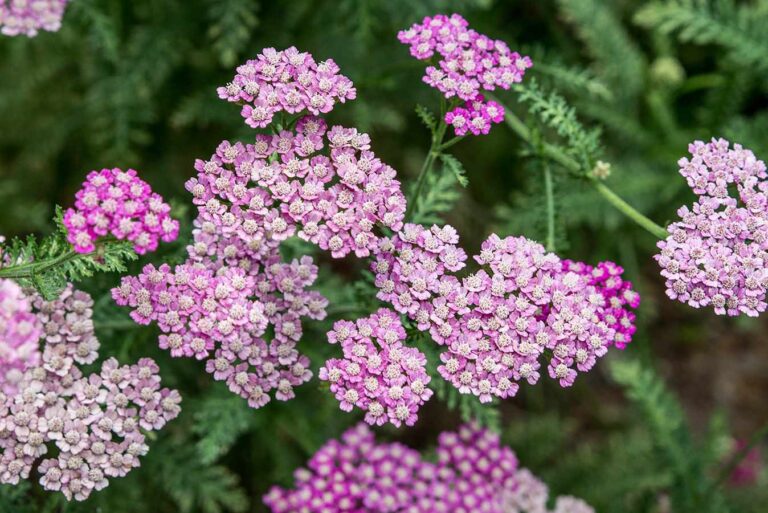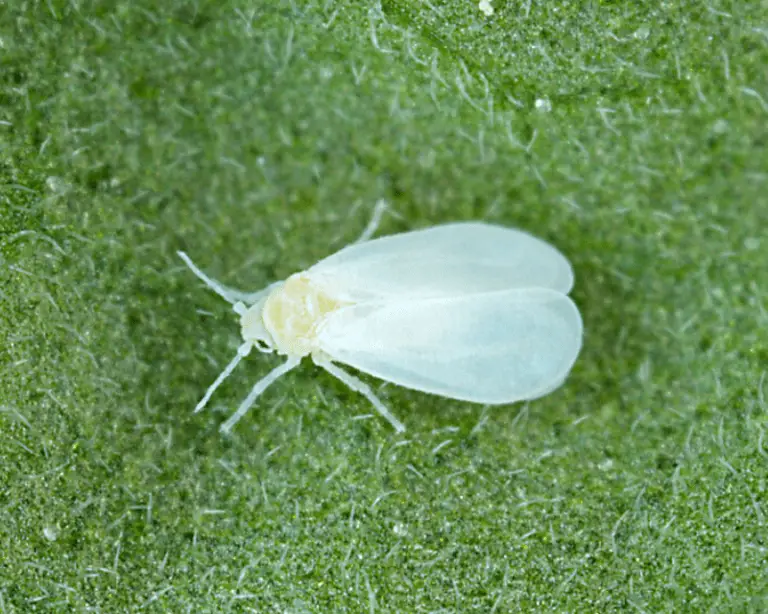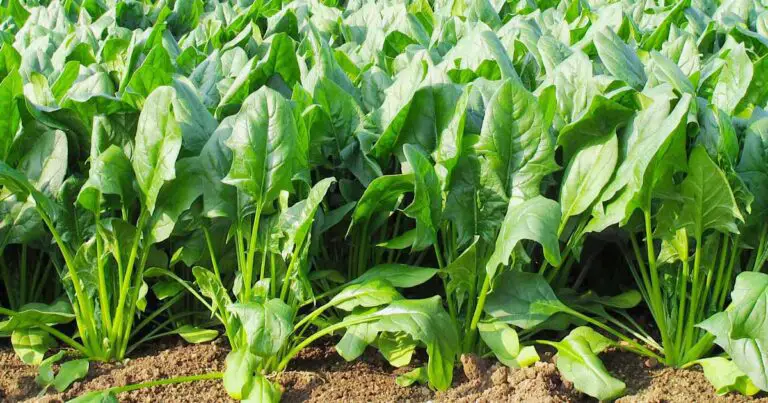Flax Plant: Fibers, Seeds, and More
Did you know that flax plants are more than just a pretty addition to your garden? Flax fibers have been used for thousands of years to create linen, while the seeds are a powerhouse of nutrition. But there’s so much more to this versatile plant!
Flax has been cultivated for its fibers and seeds for over 30,000 years, making it one of the oldest crops in the world. In fact, flax fibers were used to create the world’s oldest known woven fabric, discovered in Georgia and dating back to 34,000 BCE.
But flax isn’t just a relic of the past. Today, flax seeds are a popular superfood, packed with omega-3 fatty acids, fiber, and lignans, which have been shown to have numerous health benefits. Flax fibers are also gaining popularity in the textile industry for their sustainability and durability.
So whether you’re a history buff, a health enthusiast, or a fashionista, there’s something for everyone in the world of flax. Join us as we delve into the fascinating history, health benefits, and modern uses of this incredible plant. Trust us, you won’t be disappointed!
Table of Contents
Historical Significance of Flax Plant
The flax plant holds an extraordinary historical significance that spans centuries. Revered for its versatile nature and valuable contributions, flax has played a crucial role in the development of various civilizations around the world. From its cultivation and utilization to its cultural significance, the historical journey of the flax plant is nothing short of fascinating.
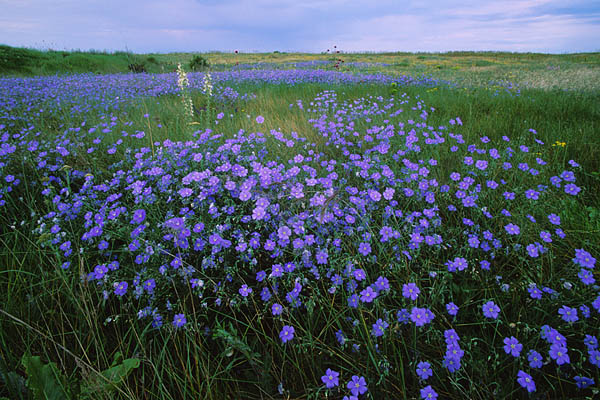
- Cultivation and Textiles:
- Flax has been cultivated for centuries, especially by civilizations like the Egyptians and ancient Mesopotamians.
- Its remarkable qualities led to the production of fine linen, a luxurious fabric associated with wealth and prestige.
- Archaeological remnants reveal widespread utilization of flax in textiles, making it a crucial part of ancient societies.
- Culinary Contributions:
- Ancient Greek and Roman cultures recognized the nutritional benefits of flax seeds.
- Flax seeds were incorporated into their diets for health and wellbeing incentives.
- Medicinal Properties:
- Ancient healers utilized flax for its medicinal properties.
- It was considered effective in treating various ailments.
- Legacy and Recognition:
- The multifaceted contributions of flax across different aspects of human life have left a lasting legacy.
- Even today, flax continues to be appreciated for its historical significance and versatile applications.
Cultivation Techniques of Flax Plant
Flax plant, also known as Linum usitatissimum, is renowned for its versatile nature and numerous applications.
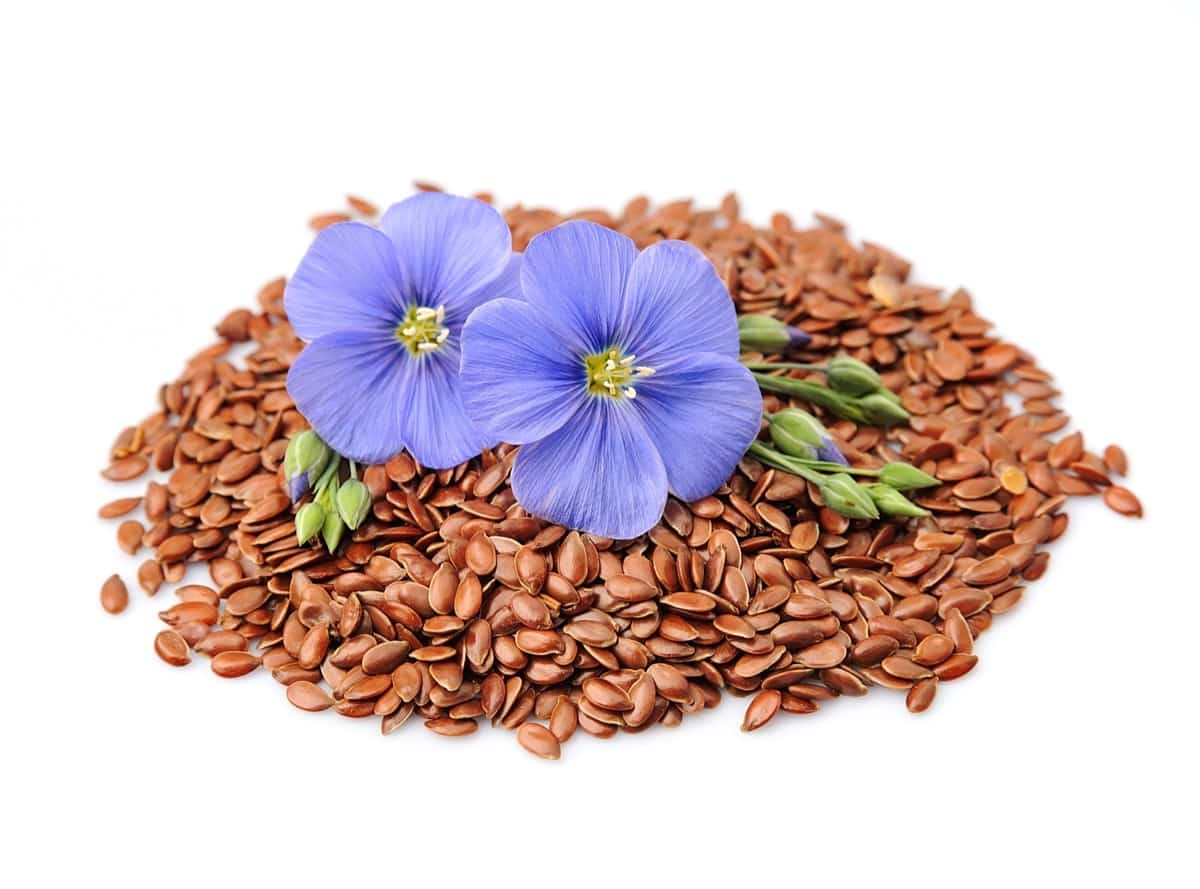
- Selecting Planting Location:
- Choose well-drained soil rich in organic matter.
- Optimal pH range: 5.5 to 8.0.
- Flax thrives in full sun exposure.
- Proper Seeding:
- Sow flax seeds during spring (April to May).
- Soil temperature: 7 to 10°C.
- Recommended seeding rate: 60 to 75 seeds per square meter.
- Plant seeds at a depth of 2 to 3 centimeters.
- Irrigation:
- Maintain consistent moisture throughout growth stages.
- Avoid overwatering to prevent fungal diseases and waterlogging.
- Monitor soil moisture and irrigate as needed.
- Weed Control:
- Manage weeds to prevent nutrient competition.
- Use pre-emergence herbicides and manual weeding.
- Follow recommended dosages and safety guidelines.
By implementing these cultivation techniques, gardeners and farmers can successfully grow flax plants and harness their myriad benefits. Proper site selection, timely seeding, adequate irrigation, and effective weed management contribute to the overall success of flax cultivation. With precision and care, flax enthusiasts can enjoy a bountiful harvest and explore the various applications of this remarkable plant.
Nutritional Value of Flax Seeds

Flax seeds, also known as linseeds, are tiny powerhouses of nutrition. Packed with essential nutrients, flax seeds are a great addition to any diet.
- Dietary Fiber Benefits: Flax seeds are an excellent source of dietary fiber, containing both soluble and insoluble fiber. Soluble fiber helps soften stools, promoting regular bowel movements and relieving constipation. Insoluble fiber adds bulk to the stool, aiding in digestion and preventing constipation.
- Omega-3 Fatty Acids: Flax seeds are rich in omega-3 fatty acids, essential for heart health and linked to a reduced risk of cardiovascular diseases. These healthy fats are crucial for maintaining a healthy heart and overall well-being.
- Plant-Based Protein: Flax seeds are a valuable source of plant-based protein, making them ideal for vegetarians and vegans to meet their daily protein needs. Protein is essential for muscle repair, growth, and overall body function.
- Vitamins and Minerals: Flax seeds are packed with essential nutrients like vitamin B1, magnesium, and phosphorus. These vitamins and minerals are vital for various bodily functions, supporting overall health and well-being.
The following table explain about the nutritional value of flax seeds:
| Nutrient | Value per 100g |
|---|---|
| Calories | 534 kcal |
| Protein | 18.3 g |
| Fat | 42.2 g |
| Carbohydrates | 28.9 g |
| Dietary Fiber | 27.3 g |
| Calcium | 255 mg |
| Iron | 5.7 mg |
| Magnesium | 392 mg |
| Phosphorus | 642 mg |
| Potassium | 813 mg |
| Sodium | 30 mg |
| Zinc | 4.3 mg |
| Vitamin C | 1.6 mg |
| Thiamine (Vitamin B1) | 0.6 mg |
| Riboflavin (Vitamin B2) | 0.2 mg |
| Niacin (Vitamin B3) | 3.1 mg |
| Vitamin B6 | 0.5 mg |
| Folate | 87 µg |
| Vitamin E | 19.95 mg |
| Vitamin K | 4.3 µg |
| Omega-3 fatty acids | 22.8 g |
| Omega-6 fatty acids | 5.9 g |
Incorporating flax seeds into your daily routine is a simple and effective way to enhance your nutritional intake. Whether sprinkled on top of yogurt, added to smoothies, or used in baking, flax seeds can provide an array of health benefits. So why not give these tiny wonders a try and take a step towards a healthier you?
“Health Benefits of Flaxseeds For Cooking and Health” provides a comprehensive overview of the nutritional value and uses of flaxseeds. The book delves into the historical significance of flaxseeds, tracing their cultivation back to ancient times. It highlights the various health benefits associated with consuming flaxseeds, including their role in cardiovascular health, cancer prevention, and reducing hot flashes.
Additionally, the book discusses precautions to consider when incorporating flaxseeds into one’s diet, such as the potential for cyanide content and oxidation. While some readers appreciate the informative content presented in a clear and concise manner, others criticize the book for its basic information and reliance on Wikipedia-like content. Overall, “Health Benefits of Flaxseeds For Cooking and Health” serves as a useful resource for individuals seeking to explore the nutritional advantages of incorporating flaxseeds into their cooking and dietary habits.
- Nutritional Value: Flaxseeds are packed with essential nutrients like omega-3 fatty acids, fiber, and lignans, which contribute to heart health, digestive health, and overall well-being.
- Versatility: Flaxseeds can be easily incorporated into various dishes, including smoothies, salads, baked goods, and oatmeal, enhancing both flavor and nutritional content.
- Cardiovascular Benefits: Consumption of flaxseeds has been linked to reduced risk factors for cardiovascular diseases, such as lower blood pressure, improved cholesterol levels, and reduced inflammation.
- Cancer Prevention: The lignans found in flaxseeds have antioxidant properties and may help reduce the risk of certain cancers, including breast, prostate, and colon cancer.
- Radio-protector: Flaxseeds contain compounds that may help protect the body from radiation damage, making them beneficial for individuals undergoing radiation therapy or exposed to environmental radiation.
- Potential Oxidation/Rancidity: Flaxseeds contain oils that can become rancid when exposed to air, light, or heat. Proper storage in a cool, dark place and consuming freshly ground flaxseeds can help minimize this issue.
- Cyanide Content: Flaxseeds contain small amounts of cyanogenic glycosides, which can release cyanide when consumed in large quantities. However, the cyanide levels in flaxseeds are typically low and considered safe for consumption in moderation.
- Limited Shelf Life: Due to their high oil content, flaxseeds have a limited shelf life compared to other seeds. It’s best to store them properly and use them within a reasonable timeframe to maintain freshness and nutritional quality.
- Texture and Flavor: Some individuals may find the texture of whole flaxseeds undesirable, while others may not enjoy the nutty flavor they impart to dishes. Grinding flaxseeds or using flaxseed oil can help mitigate these issues for those who prefer a smoother texture or milder taste.
Health Benefits of Consuming Flax Seeds

Flax seeds are a nutrient-rich food that offers numerous health benefits when consumed as part of a balanced diet. They are a great source of omega-3 fatty acids, fiber, and plant compounds, which contribute to their potential health advantages. Here are some of the key health benefits of consuming flax seeds:
- Improved digestion: Flax seeds are rich in dietary fiber, particularly soluble fiber, which helps soften stools and promotes regular bowel movements. This can help relieve constipation and maintain a healthy digestive system.
- Reduced risk of heart disease: Flax seeds may help lower cholesterol levels and reduce the number of LDL (bad) cholesterol particles in the body, which can contribute to a lower risk of heart disease.
- Stable blood sugar levels: Flax seeds may help improve blood sugar control, which can be beneficial for people with diabetes or those at risk of developing the condition.
- Anti-cancer properties: Some studies suggest that flax seeds may help prevent the growth of certain types of cancer cells, including breast, ovarian, and prostate cancer cells.
- Reduced inflammation: The omega-3 fatty acids in flax seeds may help reduce inflammation in the body, which can contribute to a lower risk of chronic diseases such as asthma and arthritis.
- Protection from radiation damage: Flaxseed lignans may help reduce inflammation, injury, oxidative damage, and fibrosis in the lungs following exposure to radiation or radiation therapy.
While flax seeds offer many potential health benefits, it is important to consume them in moderation. Eating too much flaxseed or flaxseed oil can cause digestive issues such as diarrhea. Additionally, people with certain health conditions or taking certain medications should speak with their healthcare provider before consuming flax seeds, as they may interact with certain medications or be contraindicated in certain situations.
Overall, flax seeds are a nutritious and versatile food that can be easily incorporated into a balanced diet. They can be added to smoothies, baked goods, oatmeal, and other dishes for a boost of nutrition and health benefits.
Different Types of Flax Fibers
Flax fibers, derived from the stem of the flax plant, are known for their strength, durability, and versatility.

| Type of Flax Fiber | Description |
|---|---|
| Long Line Flax | – Obtained from the central part of the flax stem.- Known for its strength and durability.- Used for high-quality textiles and fine linen. |
| Tow Flax | – Derived from the outer layers of the flax stem.- Coarser and less uniform than long line flax.- Used for coarser fabrics, twine, and industrial applications. |
| Stricks | – Short, broken flax fibers.- Often used for papermaking and other non-textile purposes. |
The wide range of uses for flax fibers highlights their importance in various industries, including fashion, home textiles, and industrial manufacturing. By understanding the different types of flax fibers and their characteristics, professionals in these industries can make informed decisions about the best fiber type to use for their specific applications.
Uses of Flax Fibers in Textile Industry
Flax fibers have been widely used in the textile industry for their exceptional qualities. One of the primary uses of flax fibers is in the production of linen fabric. Linen, known for its strength and durability, is highly favored for making a variety of products such as clothing, household textiles, and upholstery.
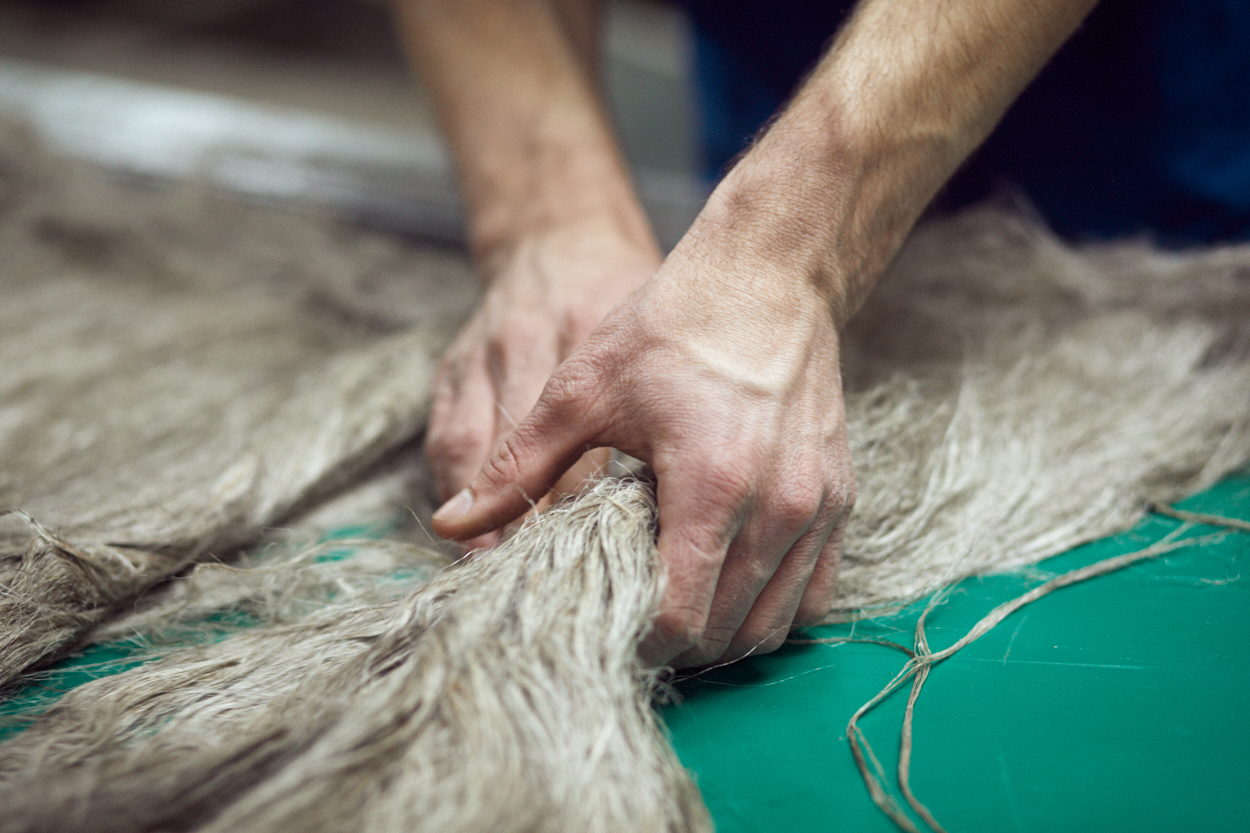
- Breathability and Moisture-Wicking:
- Linen fabric, made from flax fibers, is highly breathable and wicks moisture away.
- Ideal for warm climates and summer wear due to its comfort and ventilation properties.
- Heat Conductivity and Coolness:
- Linen remains cool to the touch, making it popular in hot weather regions.
- Excellent heat conductivity contributes to its cooling effect.
- Aesthetic Appeal:
- Linen’s natural and textured appearance gives it a unique aesthetic appeal.
- Its subtle luster and ability to hold dyes well make it attractive for fashionable garments and home decor.
- Durability and Longevity:
- Flax fibers used in linen fabric are long-lasting.
- Linen withstands frequent washing without losing quality, making it practical for bed sheets, tablecloths, and napkins.
- Versatility through Blending:
- Flax fibers can be blended with other materials like cotton or silk.
- Blending enhances versatility, creating unique and luxurious fabrics.
The following table explains about the uses of flax fibers in textile industry:
| Application | Percentage of Flax Fiber Usage |
|---|---|
| 1. Linen Clothing | 70% |
| 2. Home Textiles (Bedding, Towels) | 15% |
| 3. Apparel (Shirts, Dresses) | 10% |
| 4. Industrial Applications | 5% |
Note: This quantitative table provides a quick overview of the primary uses of flax fibers in the textile industry, with approximate percentage usage for each application.
Flax Plant’s Contribution to Sustainable Agriculture
Flax plants have long been recognized for their immense contribution to sustainable agriculture. With their ability to grow in diverse climates and soil conditions, flax cultivation offers a sustainable alternative to other resource-intensive crops. The cultivation of flax requires significantly less water and chemical inputs compared to crops like cotton, making it an environmentally friendly choice for farmers.

- Phytoremediation Potential: Flax plants, like Linum usitatissimum, exhibit phytoremediation capabilities, absorbing and eliminating harmful contaminants from the soil, thereby cleansing and restoring the land.
- Soil Enrichment: Flax’s unique attribute of enriching the soil it grows in through phytoremediation makes it valuable in sustainable agriculture. When used as a rotational crop, flax can enhance soil health, reduce the reliance on synthetic fertilizers, break disease cycles, and boost overall land fertility.
- Economic Benefits: Flax cultivation offers economic advantages to farmers due to its versatility and multiple uses. Flax seeds can be utilized for human consumption, livestock feed, or oil production, while its fibers find applications in the textile industry, enabling farmers to diversify their income sources.
- Sustainable Farming Practices: Incorporating flax into crop rotations not only benefits the current agricultural season but also sets the stage for sustainable farming practices in the long run. The demand for sustainable agriculture is increasing, and leveraging the potential of flax plants can contribute significantly to meeting agricultural and environmental challenges of the future.
With further research and innovation, the role of flax in sustainable agriculture is likely to expand, paving the way for a more eco-friendly and economically viable farming industry.
Importance of Flax Plant in Ancient Civilizations
The flax plant holds significant importance in ancient civilizations, where it was revered for its versatility and nourishing properties. Dating back to thousands of years, flax was cultivated and utilized by civilizations across the globe, including the Egyptians, Greeks, and Romans. Its cultivation was not only driven by its practicality but also by its role in various cultural and religious practices. The flax plant, commonly known as Linum usitatissimum, captured the attention of ancient societies due to its ability to provide multiple beneficial resources.
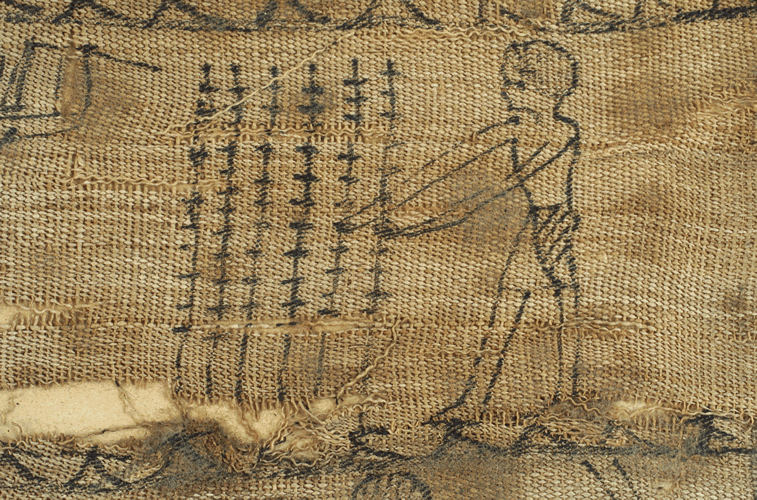
- Sacred Status in Ancient Egypt:
- Flax was revered and held a sacred status in ancient Egyptian society.
- Egyptians recognized the value of flax fibers, which were used to create luxurious linen fabric.
- Linen was reserved for royalty and aristocrats due to its fine texture, durability, and cooling properties.
- Role in Mummification Rituals:
- Linen fabric made from flax played a crucial role in mummification rituals.
- It symbolized rebirth and served as a connection to the divine.
- Beyond Textiles: Food and Oil:
- Flax served as a multifunctional resource.
- Flax seeds were consumed as a dietary staple, rich in essential nutrients.
- The oil extracted from flax was used for cooking and as a beauty product for skin and hair.
The historical legacy of flax continues to resonate, reflecting its practical and symbolic importance across cultures. 🌿🔍
Medicinal Properties of Flax Seeds
Flax seeds, also known as linseeds, have long been recognized for their medicinal properties. Packed with nutrients, these tiny seeds are rich in omega-3 fatty acids, lignans, fiber, and antioxidants. The health benefits associated with consuming flax seeds are numerous and diverse.

- One of the key medicinal properties of flax seeds is their potential to reduce the risk of chronic diseases, such as heart disease, cancer, and diabetes.
- The presence of omega-3 fatty acids in flax seeds has been linked to improved cardiovascular health, as they help lower blood pressure and reduce inflammation.
- Additionally, the lignans found in flax seeds have shown promise in protecting against certain types of cancer, including breast, prostate, and colon cancer.
- The high fiber content of flax seeds also aids in regulating blood sugar levels, making them beneficial for individuals with diabetes.
Furthermore, flax seeds have been recognized for their potential role in promoting digestive health. The soluble and insoluble fiber present in these seeds can help regulate bowel movements, alleviate constipation, and promote a healthy gut microbiome. The anti-inflammatory properties of flax seeds may also play a role in reducing gastrointestinal inflammation.
It is important to note that while flax seeds offer several potential health benefits, they should be consumed in moderation. As they are high in fiber, individuals should gradually increase their intake and drink plenty of water to prevent digestive discomfort. Additionally, individuals on blood-thinning medications or with certain hormone-related conditions should consult with a healthcare professional before significantly increasing their consumption of flax seeds.
I recently tried NOW Foods Organic Flax Seeds, and I must say, they exceeded my expectations. Incorporating them into my daily smoothies has not only added a healthy boost to my diet but also enhanced the flavor and texture of my drinks. The organic certification and non-GMO guarantee provide me with peace of mind, knowing that I’m consuming high-quality, sustainable ingredients. Moreover, the versatility of these flax seeds allows me to explore various culinary creations, from adding them to salads to using them as an egg substitute in baking. Overall, I highly recommend NOW Foods Organic Flax Seeds for anyone looking to elevate their nutrition and culinary experience effortlessly.
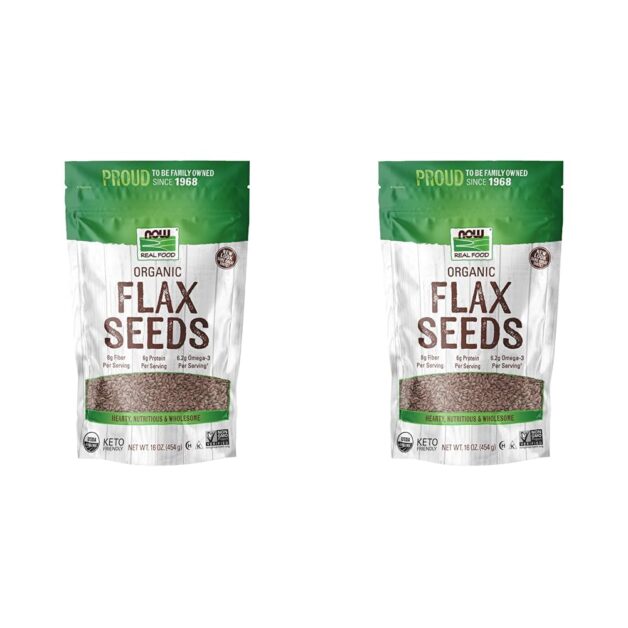
✅ Rich in Essential Nutrients: Flax seeds are an excellent source of essential fatty acids, particularly omega-3 fatty acids, which are crucial for heart health and overall well-being. They are also high in dietary fiber, promoting digestive health and aiding in weight management.
✅ Versatile Usage: These flax seeds can be incorporated into various dishes and recipes, including smoothies, baked goods, oatmeal, salads, and more, adding a nutty flavor and nutritional boost to meals.
✅ Kosher Certified: The product is certified kosher, meeting the dietary requirements of individuals who adhere to kosher dietary laws.
✅ Sustainability Features: NOW Foods emphasizes sustainability by using packaging materials that are environmentally friendly and by sourcing organic ingredients, contributing to a more sustainable food system.
❌ Packaging Variation: While the product description mentions “Packaging May Vary,” some customers may find this lack of consistency in packaging inconvenient or aesthetically unappealing.
❌ Shipping Restrictions: Due to certain restrictions, the product may not be available for delivery to certain locations, limiting accessibility for some customers.
❌ Variable Customer Experience: Although the majority of customers report positive experiences with the product, there may be occasional discrepancies in freshness or quality, as observed in a small number of customer reviews.
Flax Plant’s Role in Biofuel Production
Biofuels have gained significant attention as a renewable and sustainable alternative to fossil fuels. Flax plants, specifically flaxseeds, play a crucial role in the production of biofuels. Flaxseed oil, derived from the seeds of the flax plant, contains a high concentration of omega-3 fatty acids, making it an excellent candidate for biodiesel production.
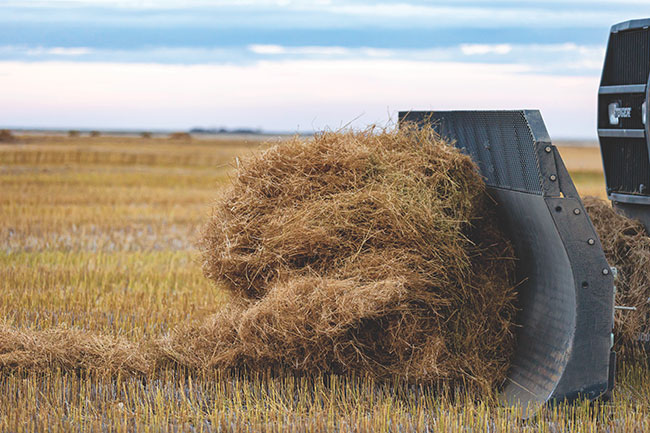
Environmental Impact of Flax Cultivation
Flax cultivation, while being an environmentally-friendly agricultural practice in many aspects, does have some potential impacts on the environment.
- Water Usage: Flax plants require a moderate amount of water to grow, but they are drought-tolerant and require less water compared to other commonly cultivated plants.
- Pesticides and Fertilizers: Flax may be susceptible to pests, diseases, and weeds that can reduce yields. To mitigate these issues, some farmers rely on chemical pesticides and fertilizers, which can potentially have negative impacts on surrounding ecosystems, such as contamination of water bodies and harm to beneficial insects.
- Integrated Pest Management: Proper management practices, such as integrated pest management techniques, can help reduce the potential negative impacts of flax cultivation. These techniques involve a combination of natural controls, crop rotation, and targeted pesticide use to minimize environmental harm.
- Irrigation: Flax does not require irrigation, as rainfall meets the water requirements.
- Crop Rotation: Flax is an annual spring plant and requires ideally a specific order in crop rotation with a general rule of not growing flax on the same field more than once every seven years. This practice not only benefits the current agricultural season but also sets the stage for sustainable farming practices in the long run.
- Soil Health: Flax has a poor developed root system and low nutrient uptake, requiring inputs of fertilizers consisting mainly of nitrogen (N), phosphorus (P2O3), and potassium (K2O). Lime is sometimes also applied depending on the pH level of the soil. This, in combination with required weed control and disease management, makes flax one of the most agrochemical intensive bast fibre crops.
- Eutrophication: The use of fertilizers can lead to eutrophication, acid rain, declines in ecosystem health, and the release of nitrous oxide, a greenhouse gas, to the atmosphere.
- Pesticide Risks: The risks of applying pesticides include adverse effects on both surrounding ecosystems and human health, such as harm to bees and other pollinators.
Flax Cultivation for Sustainable Development:
- Adaptability to Climate Change: Flax is highly adaptable to climate change and can be used as a raw material for various industries such as textile, food, and construction.
- Environmentally-Friendly Development: Flax offers an environmentally and climate-friendly development model with minimum water and pesticide needs, making it more energy-efficient than many other alternatives in the industry from production to processing.
- Biodiversity: Flax encourages farmers to diversify their crops, promoting biodiversity, which is essential in protecting the environment.
- Carbon Footprint: Flax has a lower carbon footprint compared to other crops, making it a more sustainable choice for the environment.
- Sustainable Development Goals: Flax contributes to multiple Sustainable Development Goals, including sustainable consumption and production patterns, urgent actions to deal with climate change and its effects, and protection and the sustainable use of terrestrial ecosystems.
Overall, while flax cultivation does have some environmental considerations, proper management practices and sustainable farming techniques can help reduce any potential negative impacts. By utilizing efficient irrigation systems, implementing integrated pest management strategies, and adhering to environmentally-conscious farming practices, flax growers can ensure that the environmental impact of flax cultivation is minimized, allowing for the production of this versatile crop in a sustainable manner.
Traditional and Modern Methods of Flax Harvesting

- Traditional Methods of Flax Harvesting
- Flax plants are left in the field until they are fully matured and the seeds have begun to ripen.
- Plants are pulled out of the ground by hand and bundled together in small sheaves.
- Sheaves are left to dry for several weeks before the seeds are manually extracted.
- This labor-intensive process requires careful handling to ensure the seeds are not damaged.
- Modern Methods of Flax Harvesting
- Flax may be harvested by straight combining or by cutting with a swather and threshing later with a combine.
- Straight combining is the preferred method if the crop is thoroughly dry and free of weeds.
- Swathing followed by combining has become popular because this method assures drier seed than with straight combining, particularly if the crop is not uniformly mature or if weeds are present.
- Flax is considered to be fully mature when 75% of the bolls have turned brown.
- Swathing involves leaving a stubble of about 10 to 15 cm (4 to 6 in.) to hold the swath off the ground and facilitate drying.
- Swathed flax may be ready to combine after exposure to a few days of dry weather.
- The swath may be threshed when the leaves and stems are dry enough and the seeds rattle in the boll, or the seed has dried to the desired moisture level as indicated by a moisture meter.
- Mechanized equipment such as combine harvesters are now commonly used to cut and gather the flax stems, reducing manual labor and minimizing the risk of seed damage.
Additionally, the use of machinery allows for larger-scale cultivation and harvesting, making flax production more economically viable. By utilizing these modern techniques, farmers are able to streamline the harvesting process and optimize their yields.
Flax Plant’s Adaptability to Various Climates
Flax plants, scientifically known as Linum usitatissimum, exhibit remarkable adaptability to a wide range of climates, making them a versatile crop for cultivation across different regions of the world. The plant’s adaptability to various climates stems from its ability to tolerate both cool and hot temperatures, as well as its resistance to drought conditions.
- Flax plants are adaptable to a wide range of climates, making them a versatile crop for cultivation across different regions of the world.
- They can thrive in both cool and hot temperatures, as well as in dry and humid conditions, making them suitable for various environmental conditions.
- In colder climates, such as northern Europe and Canada, flax plants can withstand frost and continue growing, making them an ideal crop for regions with shorter growing seasons.
- In warmer climates, such as parts of India and Central Asia, flax plants can endure high temperatures and still produce a good yield.
- Flax plants have the ability to adapt to both dry and humid conditions, making them an attractive crop for arid regions where water scarcity is a challenge.
- They are also resistant to diseases that often affect other crops in high humidity environments.
- The adaptability of flax plants to various climates not only makes them a resilient crop but also enhances their potential for sustainable agriculture.
- Farmers in different parts of the world can cultivate flax and benefit from its numerous uses, including its fibers for textiles and its seeds for nutrition and medicinal purposes.
- The adaptability of flax plants contributes to the biodiversity of agricultural systems, as they can be grown alongside other crops, supporting a more diverse ecosystem.
- Understanding and harnessing the adaptability of flax plants can further enhance their potential for future innovations and advancements in various fields.
Industrial Applications of Flax Fibers
- Flax fibers are prized for their exceptional properties, leading to diverse applications across industries.
- Textile production benefits greatly from flax fibers due to their strength and durability.
- Linen fabrics, derived from flax fibers, offer superior breathability, moisture-wicking, and resistance to pilling.
- The fashion and home furnishing industries particularly value flax-based textiles for their high quality.
- Flax fibers can be blended with other materials like cotton or synthetics to enhance fabric characteristics.
- In the automotive sector, flax fibers find use in manufacturing lightweight and strong automobile parts.
- These fibers are incorporated into composite materials for interior components, body panels, and structural reinforcements.
- Utilizing flax fibers in automobiles enhances part strength, durability, and reduces overall vehicle weight.
- The use of flax fibers contributes to improved fuel efficiency and reduced environmental impact in vehicles.
- Growing interest in sustainable materials drives the demand for flax fibers in the automotive industry.
Flax Plant’s Role in Supporting Biodiversity
Flax plants play a crucial role in supporting biodiversity due to their unique characteristics and ecological interactions.
1. Attraction of Pollinators:
- Flax plants possess the remarkable ability to attract a diverse array of pollinators, including bees, butterflies, and other insects.
- The beautiful blue flowers of the flax plant act as a magnet for these pollinators, offering them a rich source of nectar and pollen.
- This interaction is vital for flax plants as it facilitates cross-pollination, ensuring genetic diversity and robustness within the species.
- Furthermore, the presence of pollinators contributes to the overall health and diversity of the surrounding ecosystem.
2. Shelter and Habitat Creation:
- Flax plants provide valuable shelter and habitat for numerous beneficial organisms.
- The dense foliage and sturdy stalks of flax create a protective environment for small animals, birds, and insects.
- These organisms find refuge among the flax leaves, utilizing them as nesting sites and hiding places from predators.
- The presence of diverse fauna within the flax habitat plays a crucial role in maintaining a balanced ecosystem.
3. Ecological Importance:
- The cultivation of flax plants not only supports their own existence but also promotes the well-being and abundance of various other species.
- Pollinators, such as bees and butterflies, aid in the reproduction of flax plants, ensuring their continued survival and proliferation.
- Beneficial organisms inhabiting flax habitats contribute to ecosystem stability by engaging in essential ecological functions, including pollination, pest control, and nutrient cycling.
- Ultimately, the cultivation of flax plants contributes to the overall biodiversity and ecological balance of the ecosystem.
Innovations and Future Prospects in Flax Plant Research
Recent years have witnessed significant progress and promising prospects in the field of flax plant research.
Scientists are focusing on breeding programs to develop new flax varieties with improved traits.
Goals include increased resistance to diseases, pests, and adverse environmental conditions.
Advanced techniques such as genetic engineering and marker-assisted selection are being employed to achieve desired traits.
Ongoing research explores the potential of flax fibers in various industries.
Flax fibers’ strength, durability, and biodegradability make them suitable for automotive, construction, and textile applications.
Studies aim to optimize fiber extraction and processing methods, as well as enhance compatibility with different materials.
Flax fibers offer a sustainable and eco-friendly alternative to synthetic materials.
Continued research efforts seek to maximize the utilization of flax fibers in industrial applications.
Continued investment in research and development is essential for unlocking the full potential of the flax plant.
Further innovations and discoveries are expected to emerge, leading to expanded applications and benefits.
The future of flax plant research holds great promise, with exciting opportunities for various industries.
Watch video for more information:
fAQ
What is the historical significance of the flax plant?
The flax plant has a rich history dating back thousands of years, with its cultivation and use dating back to ancient civilizations such as Egypt and Mesopotamia.
What are the nutritional values of flax seeds?
Flax seeds are known for their high nutritional value, containing essential nutrients such as omega-3 fatty acids, fiber, protein, and various vitamins and minerals.
What are the health benefits of consuming flax seeds?
Consuming flax seeds has been associated with numerous health benefits, including reducing the risk of heart disease, improving digestive health, promoting weight loss, and supporting brain health.
What are the different types of flax fibers?
Flax fibers can be categorized into two main types: long line fibers, which are used for textiles, and short line fibers, which are used for more industrial purposes.
How are flax fibers used in the textile industry?
Flax fibers are highly valued in the textile industry for their strength and durability. They are used to make a variety of products, including clothing, upholstery, and household textiles.
What is the contribution of the flax plant to sustainable agriculture?
The flax plant is considered a sustainable crop due to its ability to grow in diverse climates, its low requirements for water and pesticides, and its positive impact on soil health.
How important was the flax plant in ancient civilizations?
The flax plant held great importance in ancient civilizations, being used for various purposes such as clothing, food, medicine, and even as offerings to gods.
What are the medicinal properties of flax seeds?
Flax seeds have been used in traditional medicine for their potential anti-inflammatory, antioxidant, and anticancer properties. They have also been linked to improving conditions such as diabetes and high blood pressure.
What role does the flax plant play in biofuel production?
Flax seeds have the potential to be used as a source of biofuel due to their high oil content. This can contribute to renewable energy production and reduce reliance on fossil fuels.
What is the environmental impact of flax cultivation?
Flax cultivation has a relatively low environmental impact due to its ability to grow without the need for excessive water or pesticides. It also helps protect soil health and biodiversity.
What are the traditional and modern methods of flax harvesting?
Traditional methods of flax harvesting involve pulling the entire plant from the ground and then drying and threshing it. Modern methods involve the use of specialized machinery to harvest and process the plant more efficiently.
How adaptable is the flax plant to various climates?
The flax plant is highly adaptable and can grow in a wide range of climates, from temperate to subarctic regions. This makes it a versatile crop that can be cultivated in many parts of the world.
What are some industrial applications of flax fibers?
Flax fibers have various industrial applications, including in the production of insulation materials, composites, biodegradable plastics, and even in the automotive industry.
How does the flax plant support biodiversity?
The flax plant supports biodiversity by providing habitats for various insects and invertebrates. It also contributes to the overall health of ecosystems by improving soil fertility and reducing erosion.
What are the innovations and future prospects in flax plant research?
Ongoing research in flax plant has focused on developing improved cultivars with higher yields and enhanced fiber quality. There is also interest in exploring its potential applications in areas such as food technology, nanotechnology, and medicine.

Studied Agricultural Engineering-Plant Protection at University of California, Davis.
Head of Content writing team at Southelmontehydroponics.com

